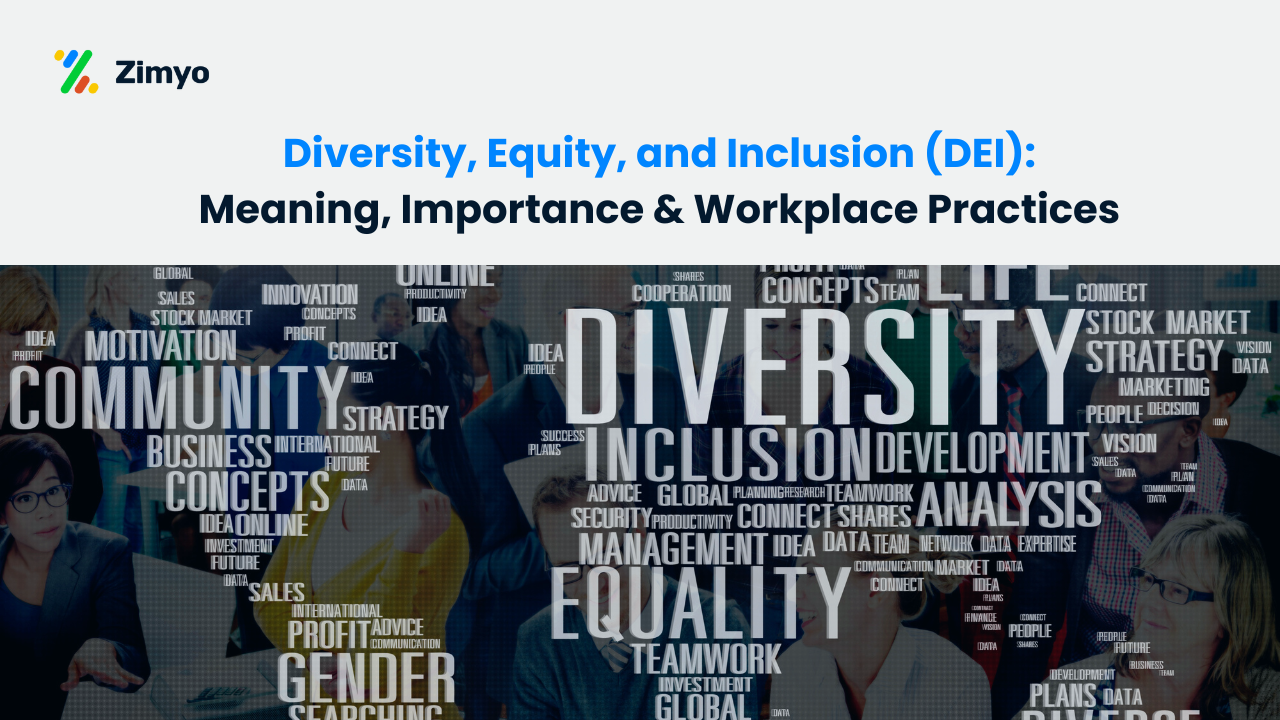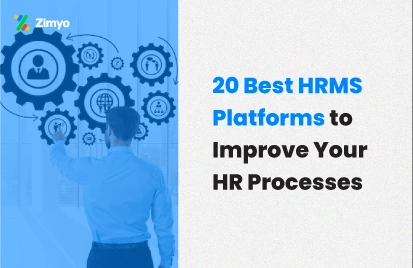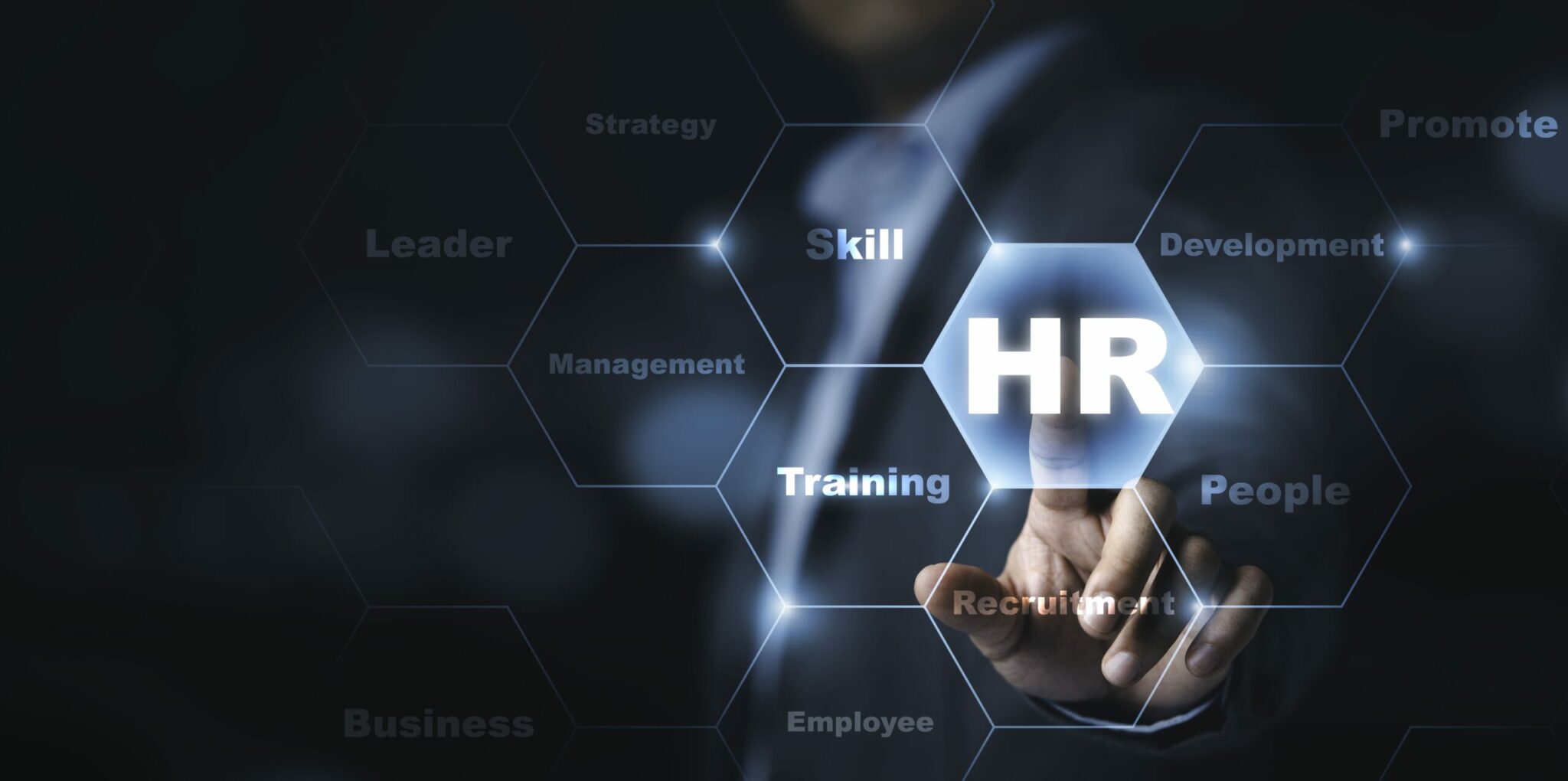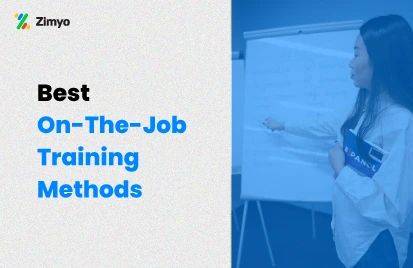Ever wondered what really sets Human Resource Management (HRM) apart from Human Resource Development (HRD)? These two acronyms might seem interchangeable, but they’re worlds apart in function and purpose. Let’s understand the unique differences between HRM and HRD and their roles in the world of Human Resources. Therefore, understanding the roles of HRM vs HRD is crucial for grasping how organizations manage and develop their workforce.
What is HRM (Human Resource Management)?
Think of HRM as the backbone of any organization. It’s all about managing the workforce efficiently and ensuring that the right people are in the right roles. HRM includes a wide range of activities. For example, recruitment, selection, compensation, performance management, and employee relations. The primary goal? To align human resources with organizational objectives. Thus, the focus on administrative functions and strategic alignment is a key aspect of HRM vs HRD.
To illustrate:
To illustrate, suppose there’s a tech startup and it’s rapidly growing. Here, the main function of the HRM team is to hire skilled, qualified or experienced web developers, depending upon the business demands. Moreover, other responsibilities include setting up compensation packages and managing performance statistics of the employees. Thereby, ensuring compliance with labor laws is among other major duties of the HRM team. They’re the ones making sure the organization’s engine runs smoothly! So, this practical example highlights the operational role of HRM vs HRD in a growing business
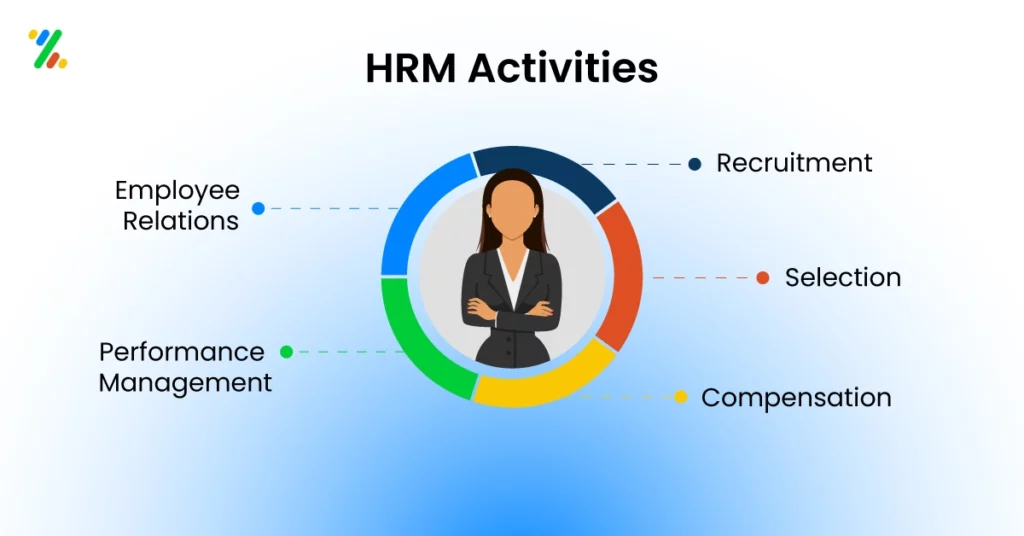
What is HRD (Human Resource Development)?
Now, let’s talk about HRD. If HRM is the backbone, HRD is the “heart” of an organization. It focuses on enhancing the knowledge, skills, and abilities of employees through continuous learning and development. HRD typically includes training and development, career planning, talent management, and organizational development. This constitutes a whole 360-degree success package within the company. However, HRD aims to improve individual and organizational performance through learning and growth. Resultantly, the emphasis on continuous improvement is what differentiates HRM vs HRD.
For instance:
For instance, now, imagine in the same tech startup, the HRD team is there to organize coding bootcamps, leadership training programs, and career development workshops. They’re investing in the employees’ future, ensuring they’re not just doing their job but excelling at it. That’s the main reason for implementing HRD. Hence, the development-focused initiatives are central to HRM vs HRD in promoting employee growth.
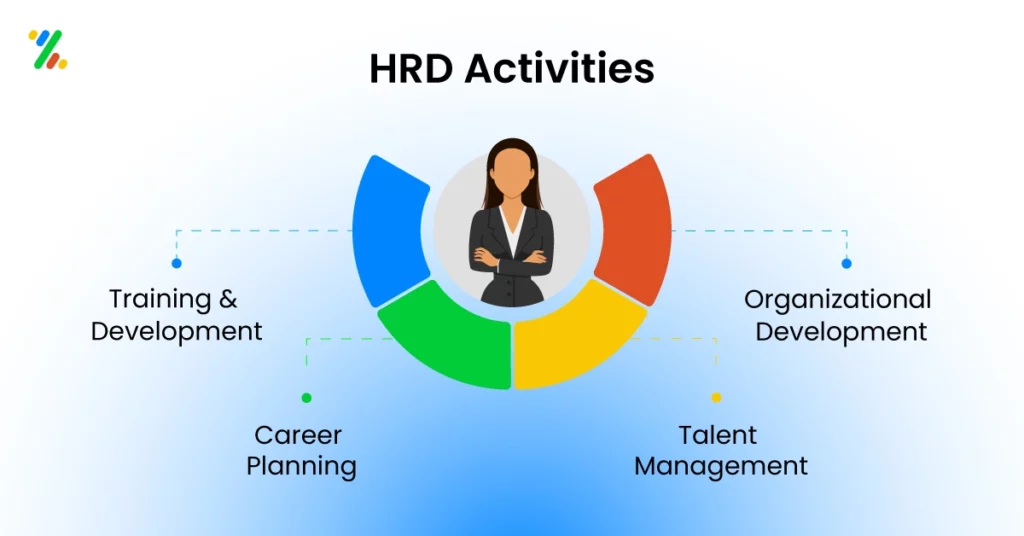
HRM vs. HRD: The Key Differences in Table Format
| HRM | HRD | Example | |
|---|---|---|---|
| Focus | Managing human resources within the organization | Developing & enhancing employees' skills & capabilities | HRM ensures there’s a proper onboarding process for new hires. HRD, on the other hand, focuses on providing ongoing training to help employees climb the career ladder. |
| Scope | Recruitment, selection, compensation, employee relations, performance management, compliance with laws & regulations | Training & development, career planning, talent management, organizational development | HRM handles the payroll & benefits administration, while HRD might conduct workshops on new software tools. |
| Purpose | Ensuring the organization has the right employees in the right positions | Improving individual & organizational performance through employee growth & development | HRM ensures that the hiring process is efficient & effective. HRD makes sure that once hired, employees have the resources & training they need to succeed. |
| Timeframe | Short-term goals & immediate operational needs | Long-term goals & strategic planning | HRM addresses immediate staffing needs for a project. HRD plans for future leadership roles & prepares employees accordingly. |
| Orientation | Organization-oriented, focusing on efficiency & resource management | Employee-oriented, focusing on growth, engagement & career progression | HRM might implement a performance appraisal system to measure employee efficiency. HRD would provide training sessions to help employees improve their skills & career prospects. |
Why Do Both HRM and HRD Matter?
You might be thinking, “Do we really need both HRM and HRD?” Absolutely! On one hand, HRM ensures the smooth functioning of day-to-day operations, while on the other hand, HRD focuses on the long-term growth and development of employees. Together, they create a balanced approach to managing and developing human capital. Thus, the interplay of HRM vs HRD is essential for comprehensive human resource management.
Henceforth, a well-structured HRM system ensures that employees are hired, paid, and appraised correctly. Thereby, an effective HRD strategy ensures that these employees continue to develop, stay motivated, and are prepared for future challenges.
HRM and HRD in Action: A Real-Life Example
Consider a multinational corporation like Google. Google’s HRM team is responsible for hiring top talent, managing benefits, and ensuring compliance with labor laws across different countries. The operational excellence in HRM vs HRD is evident in Google’s global HRM practices.
While their HRD team focuses on continuous learning programs, leadership development, and creating a culture of innovation and growth of all employees. Therefore, this dual approach helps Google maintain its competitive edge in the market and keep its employees engaged and motivated.
Conclusion
To summarize, HRM and HRD are two sides of the same coin. HRM focuses on managing the workforce efficiently, ensuring the right people are in the right roles, and handling administrative tasks. On the other hand, HRD is all about growth, development, and preparing employees for the future. The dual nature of HRM vs HRD ensures comprehensive management and development of human resources.
Moreover, by understanding and implementing both HRM and HRD strategies, organizations can ensure that they not only meet their immediate operational needs but also invest in the long-term success and development of their employees. The integration of HRM vs HRD strategies is key to sustainable organizational success.
So, the next time you hear HRM and HRD, remember that, while they serve different purposes, they’re both crucial for the overall health and success of any organization. And that’s a win-win situation for everyone! Thus, recognizing the distinct roles of HRM vs HRD is vital for appreciating their combined value.
Engage with Us!
Got any questions or personal experiences with HRM and HRD? Share your thoughts in the comments below! Let’s keep the conversation going and continue to learn from each other. Cheers to building better workplaces together!
Frequently Asked Questions (FAQs)
Think of HRM as the management team ensuring the right people are hired and well-managed, handling tasks like recruitment and payroll. HRD, on the other hand, is like the coach, focusing on training and developing employees’ skills for future growth. Both are essential for a thriving organization. The differences in HRM vs HRD emphasize their complementary roles.
Great question! In HRM, you might see tasks like recruiting new talent, managing employee benefits, and conducting performance reviews. Meanwhile, HRD focuses on organizing training programs, offering mentorship, and facilitating career development workshops. Together, these examples highlight how both HRM and HRD work to support and grow the workforce! Practical examples of HRM vs HRD showcase their unique contributions to HR functions.
An excellent example of HRD in HRM is a leadership training program. When an organization identifies potential leaders, HRD steps in to provide training and mentorship, equipping them with essential skills. This not only prepares individuals for future roles but also strengthens the entire organization by promoting effective leadership! HRD within HRM illustrates the integration of development initiatives.
It’s not about one being better than the other; HRM and HRD serve different but complementary purposes. HRM ensures efficient management of employees and operations, while HRD focuses on their growth and development. Together, they create a balanced approach that drives organizational success and employee satisfaction. Both are essential!
HR, or Human Resources, refers to the overall department that manages employee-related functions. HRM, or Human Resource Management, is a specific function within HR. It is focused on effectively managing and optimizing the workforce. In essence, HR includes all aspects, while HRM works on strategic management of people.



